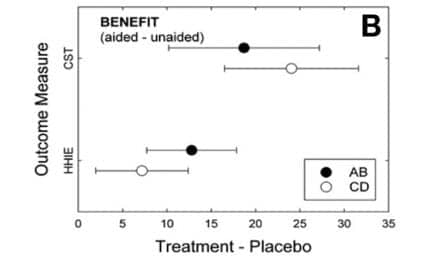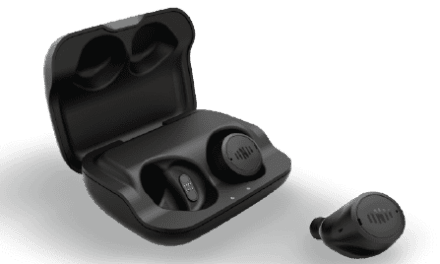Recently, the question of over-the-counter hearing aids (OTC) has been proposed. Additionally, sales of Internet and mail-order hearing aids are burgeoning.1 Hearing care professionals should be concerned. At the heart of these sales and potential sales is the issue of auditory rehabilitation (AR). True AR recognizes that amplification—no matter how wonderful or sophisticated it is or becomes—is merely one part of the larger goal for achieving communicative wholeness.
The US hearing aid market is reportedly comprised of 28.6 million Americans.1 But the larger issue is in defining “market,” in which we are reminded of the adage, “If a tree fell in the forest with no one around to hear it, does it still make a sound?” Or more aptly put, “If one does not self-identify as a hearing-impaired individual, are they still in the market?” Wishful thinkers will answer, “yes.” But quantitative analysts who deal with hard data and real-world probabilities will count only those patients who recognize the possibility of hearing loss and a need to do something about it.
In that case, we would submit that the real functional market of those who, when properly motivated, would avail themselves to resolution of their hearing loss is not 28 million people, but instead perhaps as few as 8-9 million. Put into that context, the current functional market penetration would actually be closer to 50%, not the oft-quoted, hand-wringing 20%. Granted this, we can more realistically wrestle with what is holding back the other 50%. For starters, we suggest we begin with “Psychology of the Hearing Impaired 101” (Figure 1).
Figure 1. The primary psychosocial barriers to communicative wholeness.
Psych 101 Revisited
In professional education courses, we’ve contended that, if free hearing aids were handed out on street corners to everyone wishing to wear one, we would still not significantly increase market penetration. Even when the cost is zero (along with the professional services that will be of necessity missing), all that would grow is a huge “anti-market” of people testifying, “I tried hearing aids, and they didn’t work for me.”
For those of us who have studied the hearing-impaired market for some time, we find that the primary barriers to seeking help are manifold psychosocial blocks that build higher and higher over time. Denial, as a psychosocial artifact of hearing loss, is perched at the top of the list of why our real market is not as large as we keep supposing it is. It is the primary reason why, at any price (even $0), the cost is perceived as too high for some.
Another barrier is poor self-assessment and poor “third-party” assessment. In other words, the sufferer of unmitigated hearing loss lacks internal references from which to judge their objective hearing status (the falling tree analogy, if you will). Plus, third parties who live and work around them, battle-scarred over years of arguing over whether or not the sufferer “hears fine,” finally succumb believing that the underlying culprit is really depression, social isolation, dementia, attention deficit, or, at the least, antisocial personality change.
Experience also tells us that, as unaddressed hearing loss progresses, so too does the degree and adamancy of denial. An unfitted severely hearing-impaired patient wrestling with cost-benefit issues can be many times more defensive about accepting today’s best amplification options than the patient with mild loss.
Is Price Really an Issue?
Price can be an issue in deciding whether or not one can afford to purchase optimum hearing solutions, even though there are certainly many economical alternatives on the market today. In nearly every situation, there is an upper limit of either what a person can or will voluntarily spend.
If the price of the most advanced hearing care is out of reach of a significant portion of the market, a certain number of prospective users will opt out of the market altogether. For, in the process of trumpeting the virtues of the new technologies, we are sometimes guilty of inadvertently implying that anything less is undesirable or useless. In fact, for many patients’ losses and lifestyles, the practical differences in benefits can be minimal.
That is why it is important for dispensing professionals to offer a range of technologies and price levels, including charitable assistance for the indigent population. Anything less leaves the door open for a host of undesirable delivery options (mail order, Internet, and OTC aids, consumer activism, government over-regulation, etc.) to confuse the auditory rehabilitation landscape.
The Key: True Auditory Rehab
The one feature that makes the value of private practice dispensing a super value for the consumer is a comprehensive program of auditory rehabilitation (AR). Too often, AR gets more lip service than meaningful action. When that happens, the consumer mentally asks, “What am I getting from you that I cannot get on my own?”
True AR recognizes that amplification—no matter how wonderful or sophisticated it is or becomes—is merely one part of the larger goal for achieving communicative wholeness. AR involves, first, providing the tools and concepts that answer the practical needs of the patient, and second, the systematic supervision of physiologic, neurologic, and psycho-acoustic adaptation for optimal communicative benefit.
AR tools and concepts include appropriate hearing instrumentation, assistive devices, coping strategies, ADA counseling, and assurance of a circle of support around the patient. Systematic approaches involve pre-, peri-, and post-patient progress interviews, time-sensitive programming adjustments, and strong aftercare services. It also means a close working relationship within a community dispensing, clinical, and medical team.
Simply put, no hearing-impaired person can obtain these value-added services outside the legitimate hearing aid delivery system. Attempting a do-it-yourself approach is a formula for certain failure. Therefore, it is the ethical obligation of every hearing professional to provide patients access to all that is necessary to improve their communicative quality of life.
Four-Fold Effort Awakens Market
To arouse the interest and trust of the other 50% of the unserved market, four solutions are needed:
1. Target the real market of those who are willing to accept the news of their impairment and who can be motivated to seek hearing help. Rather than beating ourselves over the head with unrealistic market expectations, we need to focus our efforts on the 50% of a practical market that is less concerned about cosmetics and gimmickry, as they are about seeking real solutions for real-life problems. It’s virtually impossible to convince someone that they have a hearing loss; only the individual (albeit help from friends and loved ones) can truly convince themselves. Ads cannot do this.
2. Consumer education needs to go beyond the oversimplified pabulum that is too often passed off as “consumer education.” Consumers need to know how their hearing loss developed, how to minimize future deterioration, and specifically how technology and AR can help. Web sites, newsletters, reprint articles displayed in waiting rooms, and materials provided for individual study provide the vehicle for this information. Heading the list of topics for the consumer to study are the psychosocial and cognitive aspects of hearing loss, and how these can effect everything from social skills and quality of life to income levels.2
3. Pricing of technology and services needs to be presented in such a manner as to allow consumers to make an informed decision in light of their personal resources, including the indigent individual. High Tech should not be oversold, and “old tech” should not be undeservedly undersold. Hearing care professionals need to understand that what the patient can afford is often the best solution for them. This falls within the realm of consultative selling—understanding what the patient needs (in terms of amplification, lifestyle, and finances), then doing your best to appropriately address his/her needs. Salesmanship, while still important, must take a backseat to the ethical dynamics of the patient-professional relationship.
4. Recognize that we are, first, auditory rehabilitation professionals, and second, entrepreneurs and/or professionals often confronted with the increasing financial demands of a competitive health care system or business environment. To do this is to implement a true AR program, complete with assistive devices, coping strategies, ADA counseling, cochlear implant referral pathways, etc, where indicated. It means a program of nurturing the recovering auditory system, and helping patients utilize all available options. It means taking emphasis off the almighty hearing aid and putting it on the individual struggling to improve their lot in life.
If we do this, we will make consumers our allies in the battle against deafness, not adversaries searching for ways to get around us. We will earn the trust of the market, not its jaded perception that money is first. We need to awaken that sleeping giant that increasingly forfeits its right to hearing help for lost wages, lost social empowerment, and reduced quality of life.2 Then, sufferers of hearing impairment will exercise the faith to know that, when a tree falls in the forest, it indeed makes a noise—whether they heard it or not.

|
References
1. Kochkin S. The VA and direct mail sales spark growth in hearing aid market. Hearing Review. 2001;8(12):16-24,63-65.
2. Kochkin S, Rogin C. Quantifying the obvious: The impact of hearing instruments on quality of life. Hearing Review. 2000;7(1):6-34.
Correspondence can be addressed to Max Stanley Chartrand, Digicare Hearing Research, PO Box 706, Rye, CO 81069; email: [email protected].

.gif)
.gif)



